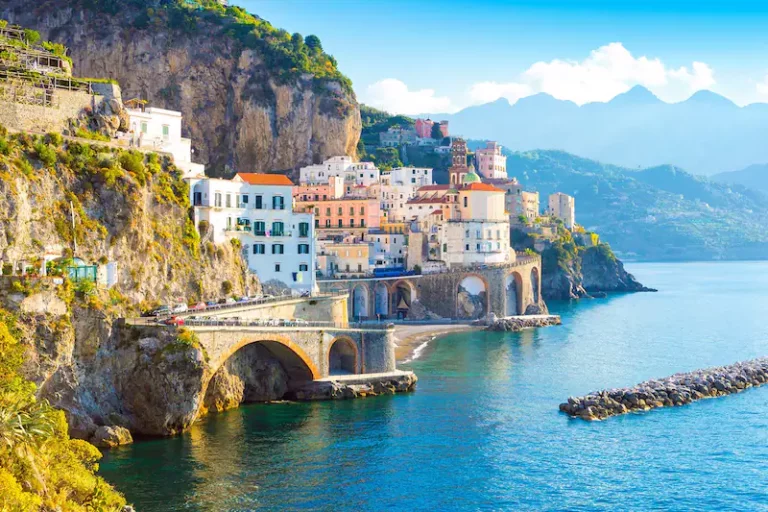Sun-drenched cliffs, vibrant towns clinging to the Mediterranean, and a legacy as rich as the limoncello that flows freely – the Amalfi Coast is a siren song for travelers seeking idyllic Italian charm. But amidst the allure, a crucial question arises: When is the best time to visit the Amalfi Coast and capture its true magic?
Chasing Spring’s Gentle Embrace (April-May)
As winter loosens its grip, the Amalfi Coast awakens in a burst of color. Wildflowers paint the hillsides in vibrant hues, and citrus groves release their intoxicating perfume. Pleasant temperatures (averaging 18-23°C) bathe the region in warm sunshine, perfect for leisurely strolls through charming villages like Positano and Atrani.
Crowds haven’t reached their peak yet, so exploring historical gems like Pompeii and Herculaneum feels more intimate. Adventure seekers can hike the Path of the Gods, while foodies indulge in the season’s fresh bounty – think asparagus, artichokes, and the first of the summer’s juicy tomatoes.
Insider Tip: Don’t miss the Festa di Sant’Alfonso Maria de’ Liguori in Sant’Agata (early May), a vibrant celebration with a procession and traditional music.
Summer’s Seductive Sizzle (June-August)
The Amalfi Coast transforms into a sun-kissed playground during the summer months. Temperatures soar into the mid-20s, enticing visitors to bask on pristine beaches like Marina Grande and Spiaggia dei Conigli. The Mediterranean beckons with its turquoise waters, ideal for swimming, snorkeling, and boat trips to hidden coves and secret grottoes.
Vibrant festivals pulse with energy, like the Luminaria di Sant’Antonio in Amalfi (June), illuminating the town with thousands of candles. Nightlife buzzes, with lively bars and piazzas overflowing with laughter and conversation. However, be prepared for peak season crowds and potentially inflated prices.
Insider Tip: Book accommodations and activities well in advance, especially if you have your heart set on specific locations or experiences.
Autumn’s Enchanting Palette (September-October)
As summer’s fervor wanes, the Amalfi Coast dons its autumnal attire. Lush greenery softens into warm hues of amber and ochre, creating a breathtaking spectacle. Temperatures remain pleasant (18-24°C), offering comfortable conditions for sightseeing and hiking.
Crowds thin, making popular attractions less congested and creating a more relaxed atmosphere. Foodies rejoice at the arrival of truffle season, where this prized ingredient elevates local dishes to new heights. Wine lovers can participate in grape harvests and savor the first pressings of the new vintage.
Insider Tip: Attend the Sagra del Limone in Cetara (late September), a vibrant celebration of the region’s iconic citrus fruit with food stalls, music, and traditional costumes.
Winter’s Peaceful Interlude (November-March)
The Amalfi Coast takes on a tranquil air during the winter months. Tourists dwindle, and a serene stillness settles over the towns. Temperatures dip (averaging 8-15°C), making it less ideal for beach lounging, but perfect for cozy evenings by crackling fireplaces.
Accommodation rates plummet, offering the opportunity for a luxurious stay at a fraction of the summer price. Hikers can enjoy the trails without the summer crowds, and history buffs can delve into museums and archaeological sites without battling long lines.
Insider Tip: Don’t miss the Presepe Vivente (Living Nativity Scene) in Materdei (December), a magical spectacle with costumed locals reenacting the nativity story.
So, When Should You Go?
The answer, as with most things in life, depends on your personal preferences. Here’s a quick breakdown:
- For pleasant weather, moderate crowds, and blooming landscapes: April-May and September-October.
- For sun, swimming, and vibrant nightlife: June-August (be prepared for crowds and higher prices).
- For tranquility, affordable rates, and unique winter experiences: November-March.
Ultimately, the best time to visit the Amalfi Coast is when it aligns with your travel desires and creates memories that linger long after you return home.
